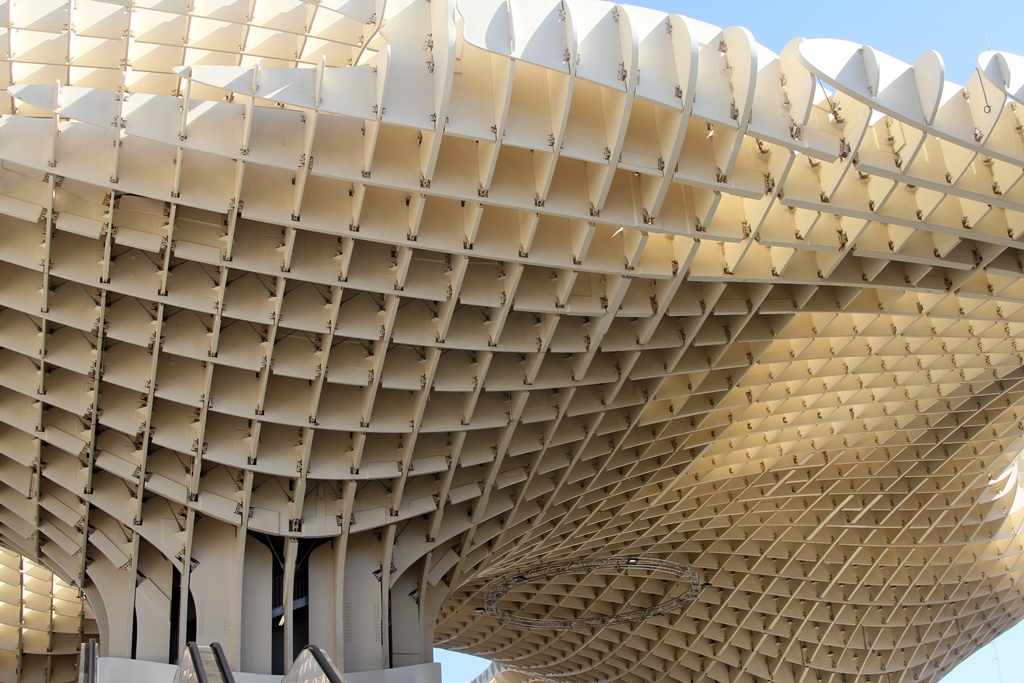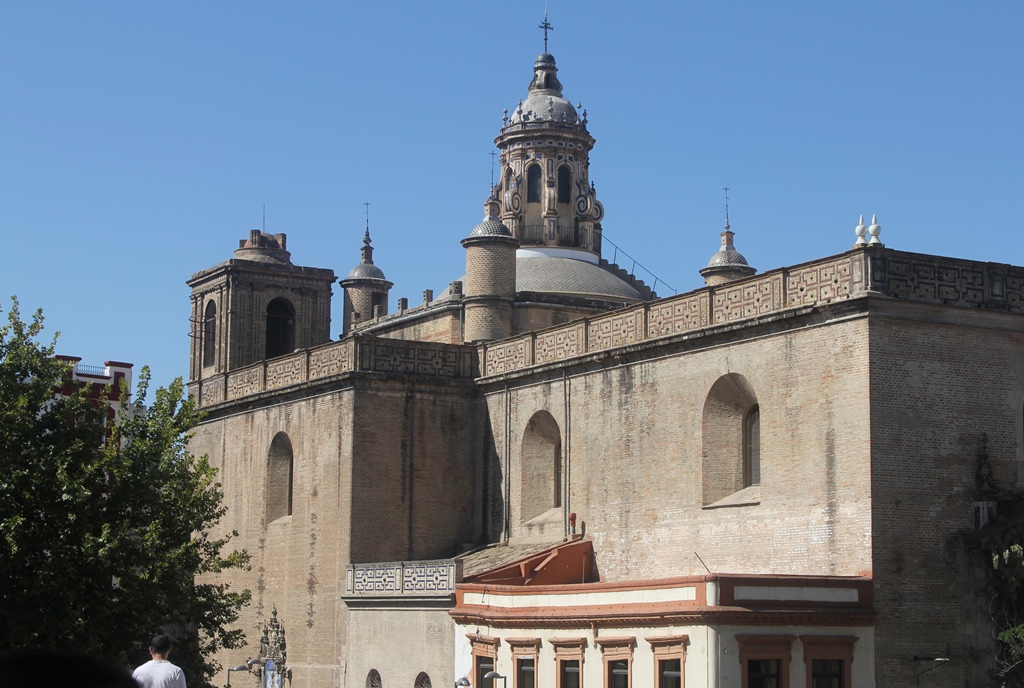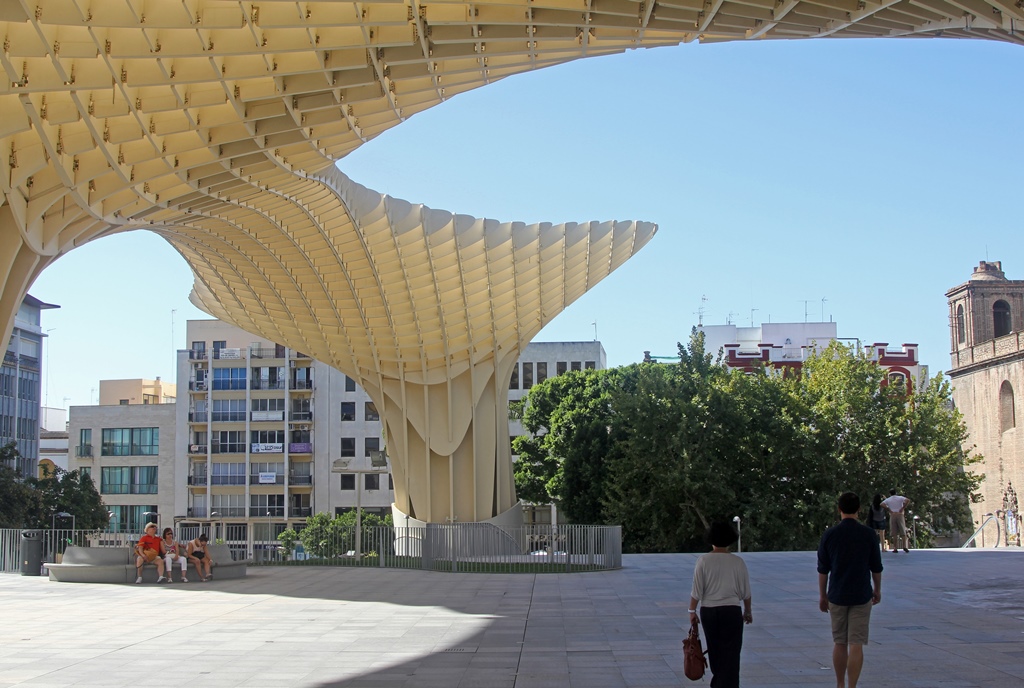Metropol Parasol
The Metropol Parasol is one of Seville's most conspicuous landmarks. Billed as the world's largest
wooden structure (it measures about 490 by 230 feet, and rises 85 feet above the ground), it looks
like the output from a huge, demented waffle iron, or like some immense alien lifeform that has sprouted
from the concrete. The locals call it Las Setas de la Encarnación (the Mushrooms of the
Incarnation), and it does resemble six colossal fungi whose tops have merged into one large, amorphous
surface. While concrete and steel were involved, the bulk of the structure is made of
polyurethane-coated birch panels which have been fastened together, largely by glue. Embedded within
the recesses of the woody structure are a Central Market and a restaurant, and the top, which is
somewhat higher than the surrounding buildings, serves as an observation platform. The structure was
completed in 2011. Which explains why it appeared to us as a puzzling work in progress when we'd seen
it in 2010.
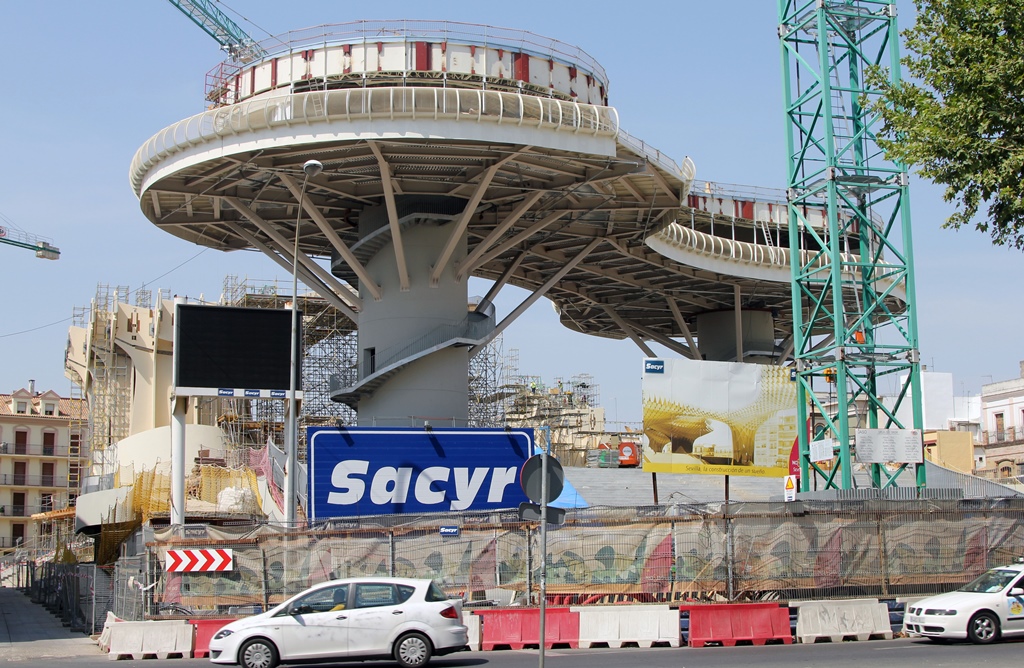
Metropol Parasol Under Construction, 2010
The Metropol Parasol pretty much subsumes a square called the Plaza de la Encarnación, with an
amoebalike appendage (and one "mushroom") slopping across the Calle Imagen to the south.
Iglesia de la Anunciación, South of Calle Imagen
The square's name comes from a convent which was located there from the 16th Century until
its destruction by French forces in the early 19th Century. After the Frenchmen departed, a
conventional building was constructed to house a Central Market. This building lasted long
enough to eventually qualify as a blight on the neighborhood, and it was torn down in two
phases, in 1948 and in 1973. The square was used mainly as a parking lot until the early
1990's, when it was decided to turn it into a proper underground parking garage, with a new
market building on top of it. Preliminary construction began, but it didn't take long
before the builders ran into some ancient Roman ruins. The project was paused, so this
development could be pondered.
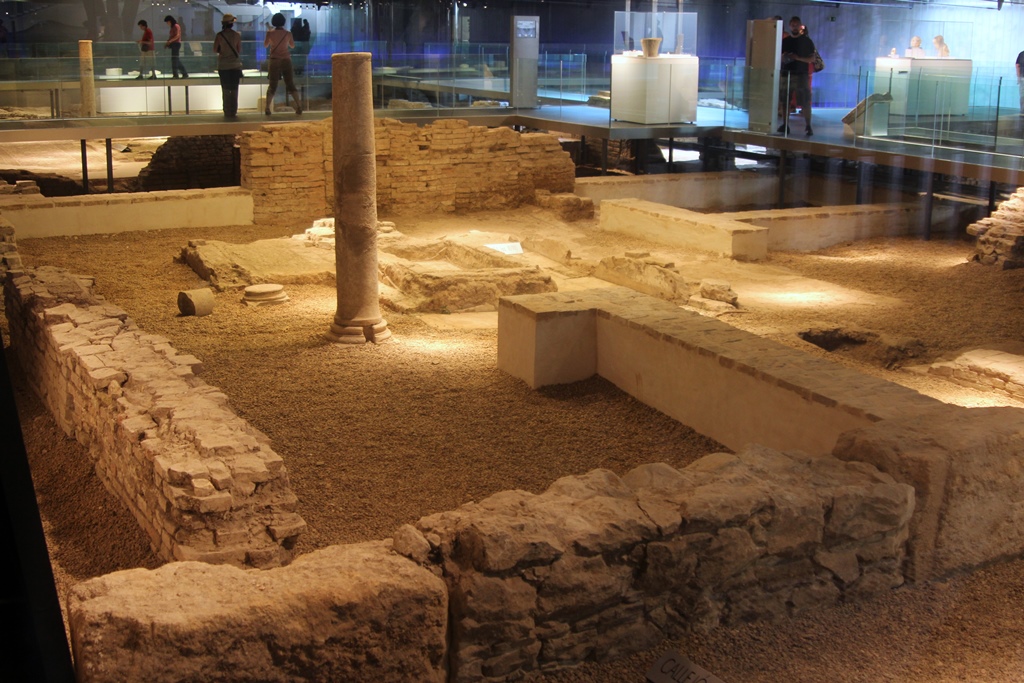
Roman Ruins, Antiquarium
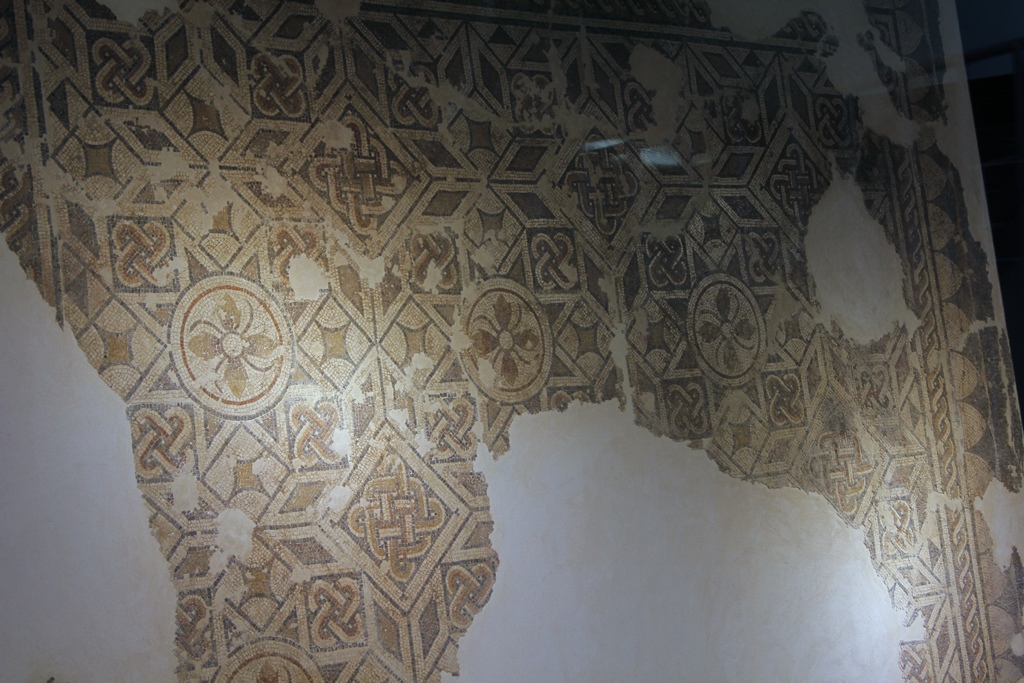
Roman Mosaic, Antiquarium
After a good long ponder, the city council decided they wanted to preserve the ruins and create
an archaeological museum around them, while still adding a market hall to the square. A design
competition was launched in 2004, with these being the major constraints. The winner turned out
to be a German architect named Jürgen Hermann Mayer (self-named "Jürgen Mayer H"), who proposed
the eventual Metropol Parasol. Also among the constraints, naturally, was the non-destruction
of the ruins, and six areas were identified among the ruins in which support columns could be
safely installed. These were incorporated as the "stems" of Mayer's mushrooms. Construction
began in 2005, with the primary builder being Spanish company Sacyr Vallehermoso. With the
project being so unique, difficult technical challenges were encountered and eventually overcome,
but the project ended up going significantly overschedule and overbudget. It was, however,
completed in April of 2011. Reaction to the structure by locals has been divided. But a lot of
Parisians didn't like the Eiffel Tower at first, either.
We checked out of the Bécquer Hotel, so we wouldn't have to worry about beating checkout time
(they allowed us to store our luggage in a small room for a couple of hours), and walked over to
have a closer look at the Metropol Parasol, which was not far. Standing underneath it, we could
see that its lattice structure cast a great deal of shade (welcome in a Sevillian summer) without
completely blocking the sunlight.
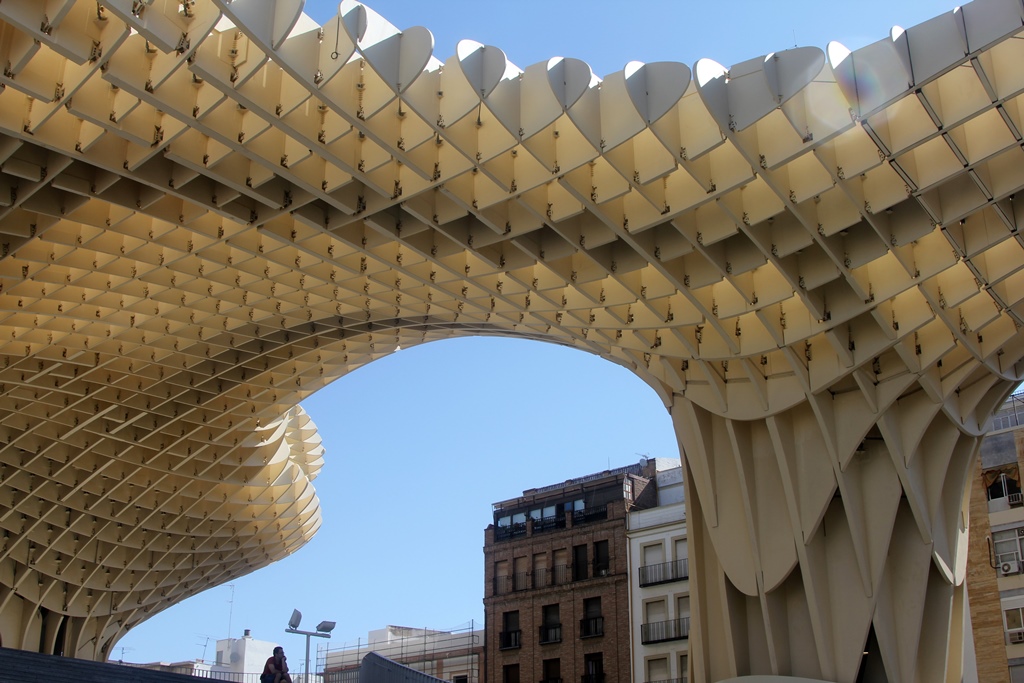
Metropol Parasol
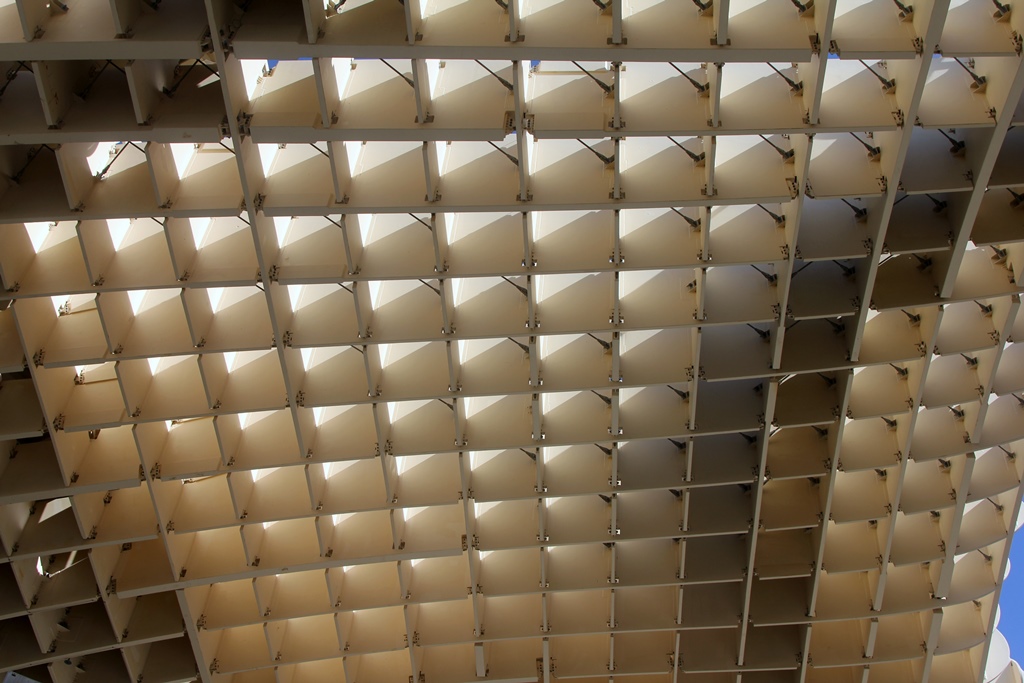
Underside, Metropol Parasol
Nella, Philip, Metropol Parasol
The Parasol has four levels: the underground Antiquarium (where the ruins are), the street
level (where the Central Market is), a level below the top (the restaurant can be found here),
and the top (where the best views are to be had). We looked around the restaurant level a
little, but we weren't hungry, so we headed to the top.
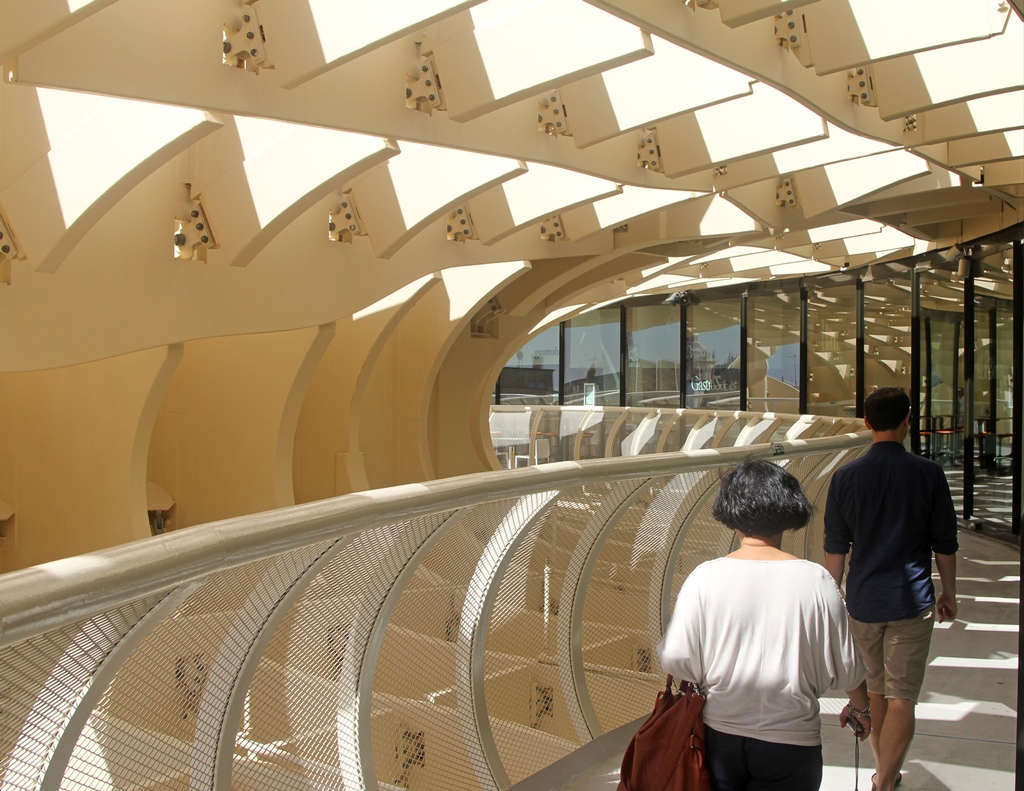
Nella and Philip and Restaurant
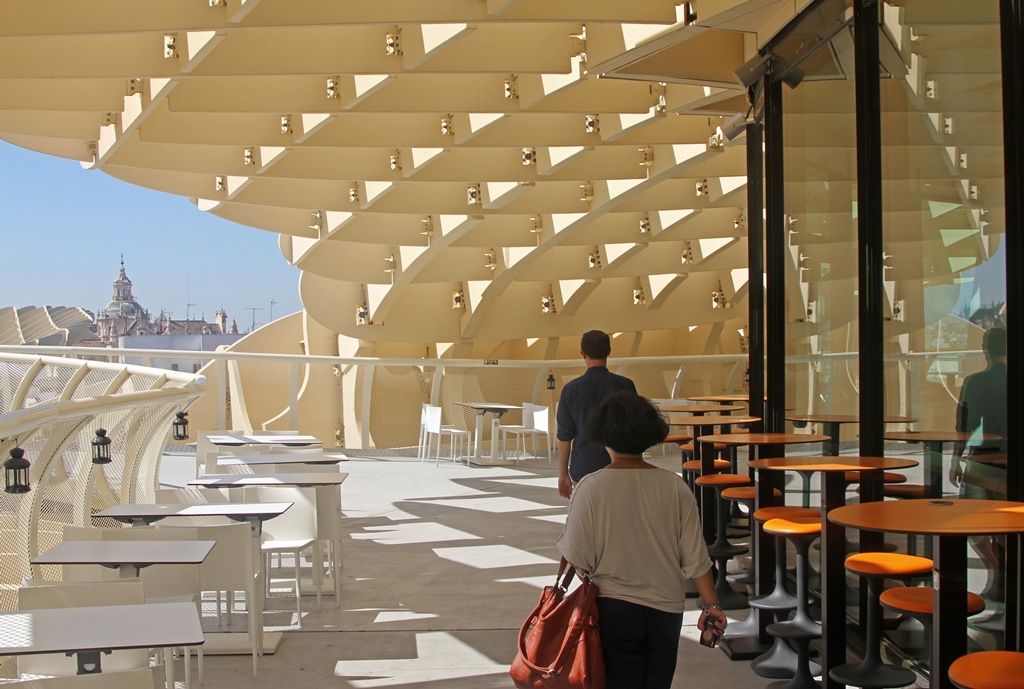
Nella and Philip, Restaurant Level
On the top a walkway snaked its way across all the wood and polyurethane. In places
there were signs pointing out points of interest.
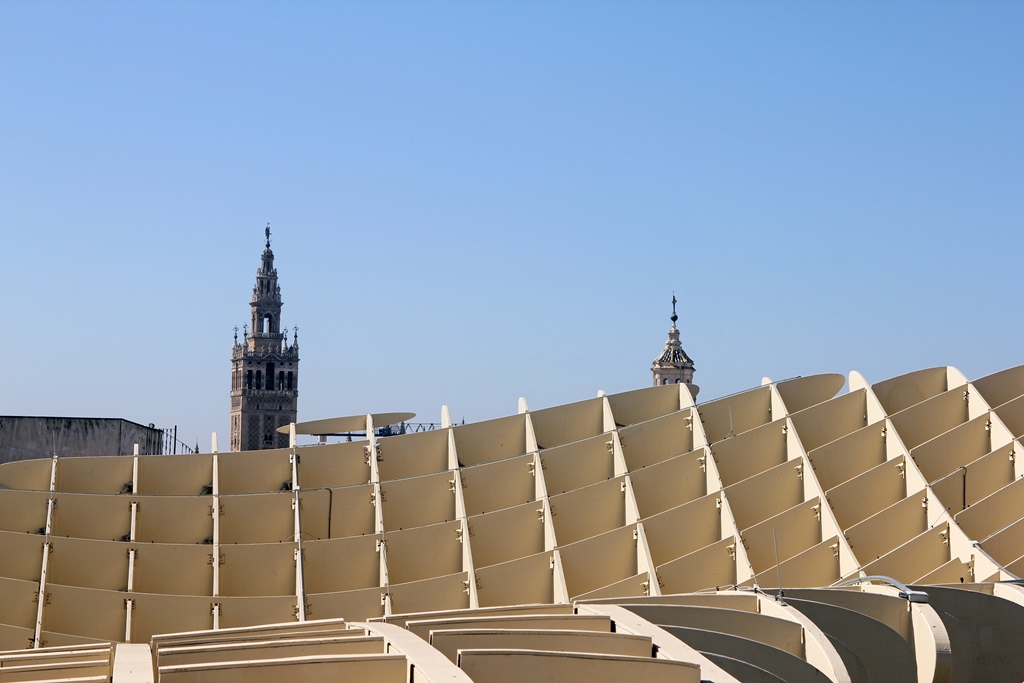
Giralda and Top of Metropol Parasol
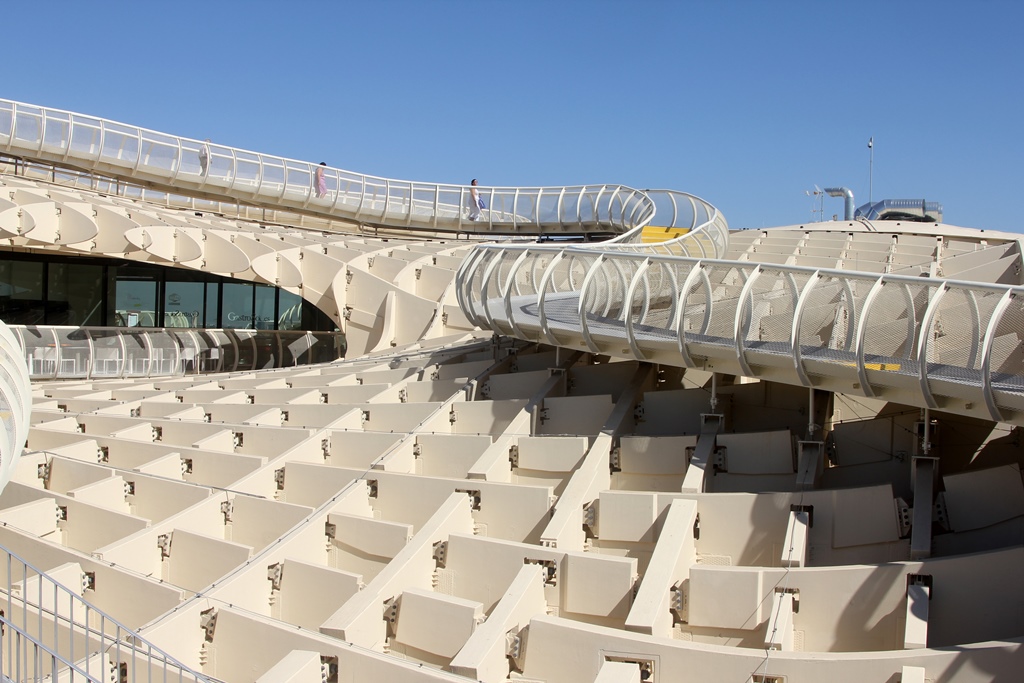
Top of Metropol Parasol with Walkway
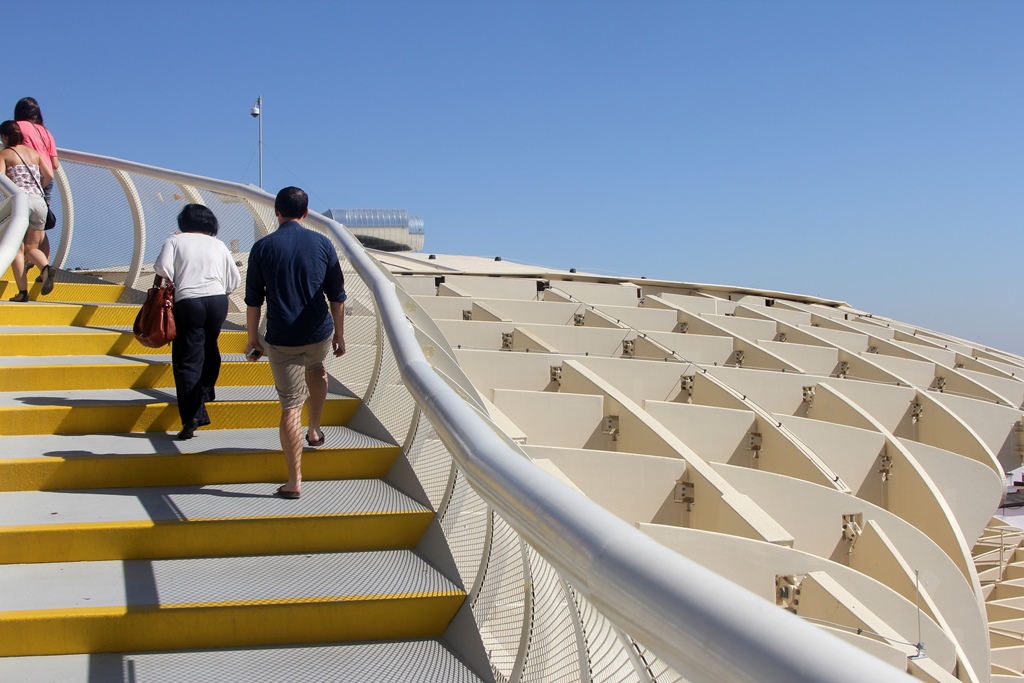
Nella and Philip on Metropol Parasol Walkway
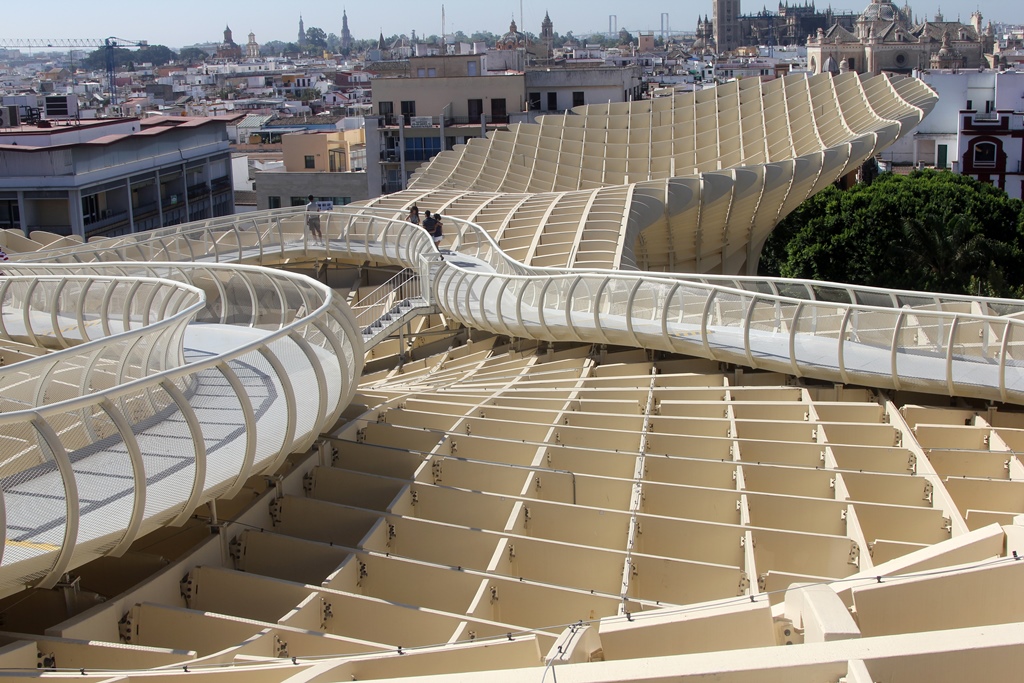
Walkway, Metropol Parasol
We found the best views from the northern end of the Parasol, where the highest point of
the walkway was. Most interesting to us, and probably to most tourists, was the direction
of the old town, where we could see the cathedral and Giralda, as well as some other
churches. In one direction we could see some modern-looking buildings which we found out
were left over from Expo 92 and apparently weren't being used for much anymore.

Cathedral and Walkway
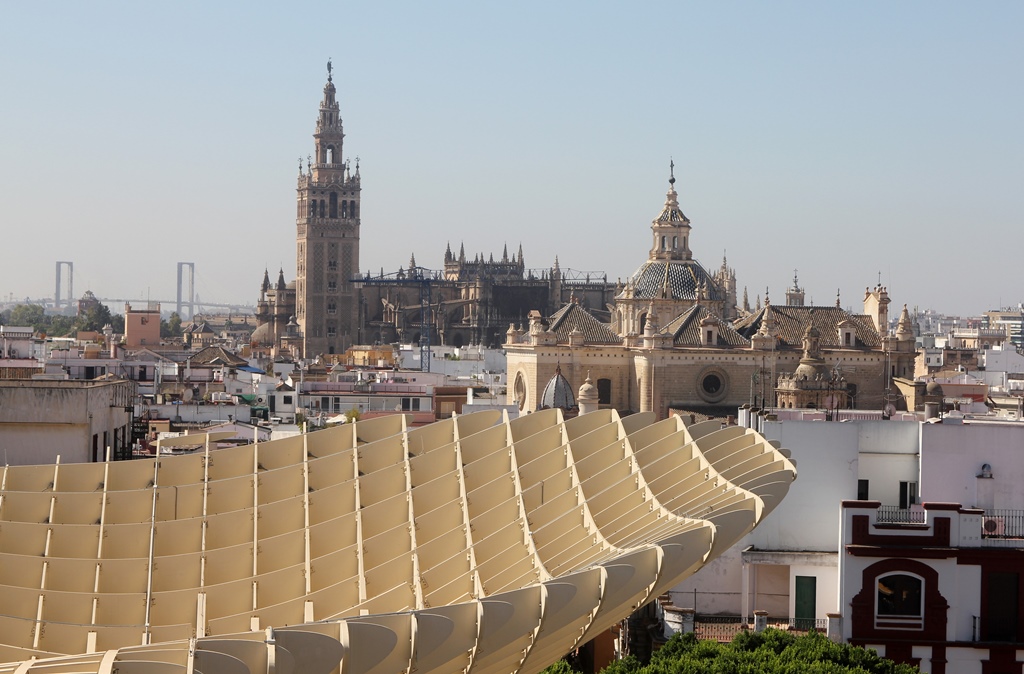
Cathedral and Iglesia del Salvador

Philip, Nella and Iglesia de la Anunciación
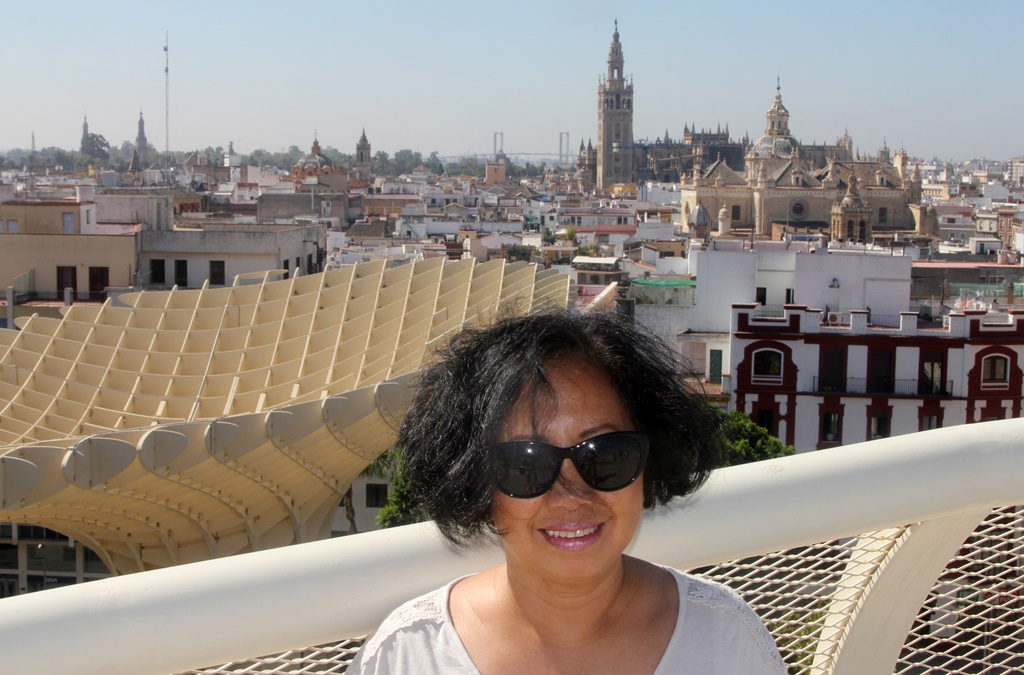
Nella

Nella on Walkway
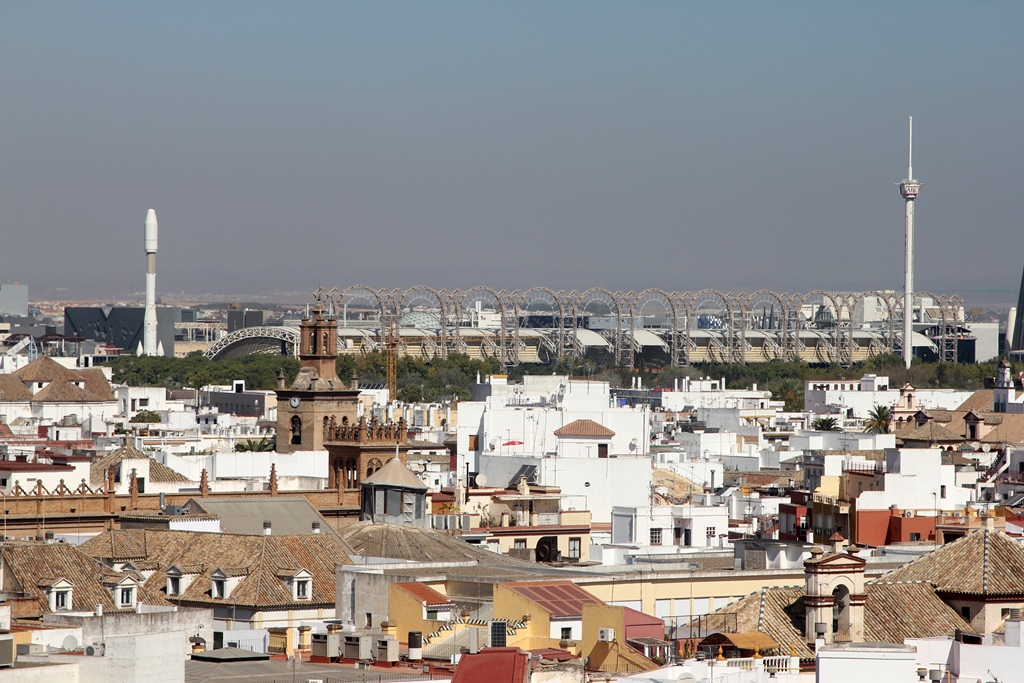
Expo 92 Buildings
We found our way back to ground level and returned to the hotel to pick up our luggage. We
took a taxi to the train station and said our farewells to Sevilla. It was time to move on
to our next destination: Córdoba.

